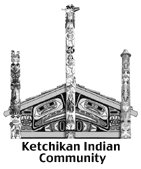 By CAROLYN JONES San Francisco Chronicle February 28, 2006
As San Francisco and other cities strive to reach self-imposed goals of keeping every bit of trash out of landfills by 2020, even animal waste is being scrutinized to see how it might be reused or recycled. And so San Francisco has become the first city in the country to consider turning Fido's droppings into methane, which can heat homes, cook meals and generate electricity. "Poop power? Yes, it's possible to produce electricity, natural gas and even fuel from Rover's poop and other waste material," said Robert Reed, a spokesman for Norcal Waste, which carts away the waste San Francisco, San Jose and a dozen other Northern California cities generate. "There are a lot of bugs to work out, steps to figure out, costs to be considered, but we are beginning to talk to the city about it and look into this area more actively."
Animal feces make up nearly 4 percent of San Francisco's residential waste - nearly as much as disposable diapers - so it is a significant stumbling block to cities reaching their landfill goal. "American dogs and cats produce 10 million tons of waste a year, and no one knows where it's going," said Will Brinton, a scientist in Mount Vernon, Maine, and one of the world's leading authorities on waste reduction and composting. "That's really beginning to be looked at as a nightmare." Dog and cat waste usually ends up in a landfill, where it's mummified for generations in plastic bags. If it's not tossed out, it's left where it falls and dissolves into the ground, where it flows untreated into the water table or the bay. Or it's scooped up with yard waste and tossed into the compost bin - which is a no-no, because animal waste is full of pathogens. So San Francisco has asked Sunset Scavenger, a subsidiary of Norcal, to find a use for it. In the next few months, Norcal hopes to place biodegradable bags and dog-waste carts in Duboce Park, one of the city's busiest dog parks. The waste will be collected and tossed into a contraption called a methane digester, which is little more than a tank in which bacteria chew on poo for about two weeks to create methane. The methane can be piped directly to a gas stove, heater, turbine or anything else powered by natural gas. The idea isn't so far-fetched. Several European countries, developing nations elsewhere in the world and a smattering of American dairy farms already convert animal waste into energy. Straus Family Creamery in Marin County installed a methane digester in 2000, and it's working great, company officials said. In a 2004 report prepared for the California Energy Commission, the creamery's manure-to-energy process met or exceeded expectations. The dairy uses the methane to power the plant, saving Straus thousands of dollars a month in energy bills. There are a few potential glitches, however. Most households don't produce enough food scraps, animal waste and other organic matter to power an entire home. And most households don't produce waste at a rate consistent enough to be a reliable energy source. Another problem is that the gas in the methane digester will probably contain small amounts of other gases, which will diminish the methane's efficiency. But with a few technological tweaks, methane digesters could be used in individual homes within the next few years, said Fernando Berton of the state Integrated Waste Management Board "You've got solar panels on homes. Why not home-based anaerobic digestion processes?" he said.
Publish A Letter on SitNews Read Letters/Opinions
|
||

